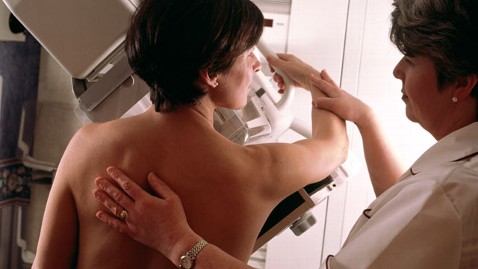Breast Cancer: Know Your Risks

Know your risks for breast cancer. (Image credit: Getty Images)
Reported by Dr. Brian Lau for ABC News:
Breast cancer strikes more than 2.7 million women in the United States, according to the National Cancer Institute. One in eight women will be diagnosed with the disease at some point in their lives.
Dr. Richard Besser, chief health and medical correspondent for ABC News, hosted a tweet chat this week on breast cancer prevention to help women understand their risk factors for the disease and what steps they can take to minimize these risks.
Besser was joined by doctors from top hospitals from all over the country, as well as medical experts from the Centers for Disease Control and Prevention, the American Cancer Society and various chapters of the Susan G. Komen Breast Cancer Foundation.
Click here for the full transcript of the chat. Read on for the highlights.
What are the risk factors for breast cancer?
Most breast cancer patients don't have any known risk factors. However, the chance of developing the disease increases with age, obesity, increased breast density and history of previous cancer treatments.
Does Breast Size Affect Breast Cancer Risk?
A woman is also more likely to develop breast cancer if an immediate relative is diagnosed with the disease before age 50. Women who have had no children or who had their first child after age 30 have a slightly higher breast cancer risk. And women who began menstruating early or go through menopause after the age of 55 may have an increased risk, possibly due to a longer lifetime exposure to the hormones estrogen and progesterone.
Overall, white women are slightly more likely to develop breast cancer than are African-American women, but African-American women are more likely to die of this cancer.
What gene mutation increased Angelina Jolie's risk of breast cancer?
BRCA1 and BRCA2 are genes that help suppress tumors. Angelina Jolie was diagnosed with an inherited mutation of the BRCA1 gene, which increased her risk of developing breast cancer and ovarian cancer.
Not all BRCA variants are as dangerous and only about 5 to 10 percent of breast cancer cases are associated with genetic mutations. Additionally, not all children or relatives will inherit those mutations. Doctors recommend genetic testing for high-risk patients like Jolie, who has a strong family history of breast cancer.
Are pre-emptive bilateral mastectomies the only course of treatment in a high-risk situation like Jolie's?
Jolie chose to have a prophylactic bilateral mastectomy to remove both of her breasts, which has been found to greatly reduce the risk of breast cancer. But it doesn't entirely eliminate risk, and this isn't the only choice for someone faced with a similar diagnosis.
Angelina Jolie's Double Mastectomy Fuels National Debate
Two other options exist for women at high risk of developing breast cancer: They can monitor their health more frequently, alternating a mammogram and MRI of their breasts every six months. Or, they can undergo preventive chemotherapy.
The number of patients opting for prophylactic mastectomy is increasing. A 2008 study in the International Journal of Cancer found that about 36 percent of American women with a BRCA1 or BRCA2 mutations chose to have both breasts removed.
What can the average woman do to prevent breast cancer?
Maintaining a healthy lifestyle through exercise, weight control and limiting alcohol can help prevent breast cancer. For a typical woman who doesn't have any risk factors for the illness, the American Cancer society recommends a yearly mammography screening after age 40. The U.S. Preventive Services Task Force recommends regular mammograms every two years for all women between the age of 50 and 74.